010000 - Design Considerations
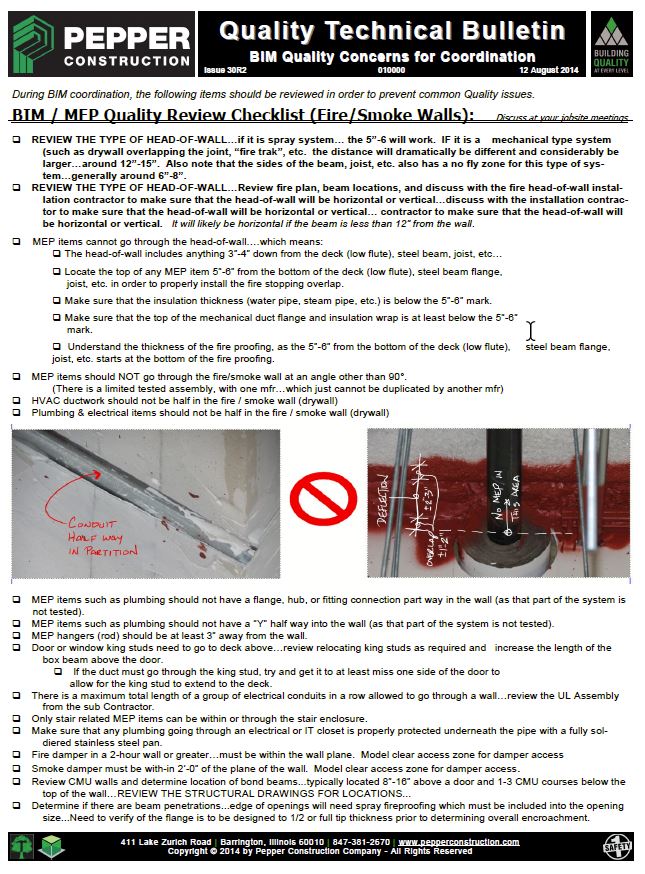
BIM Quality Concerns Bulletin - Issue 30R2
- Corey S Zussman, AIA
- Link
During BIM coordination, the following items should be reviewed in order to prevent common Quality issues.
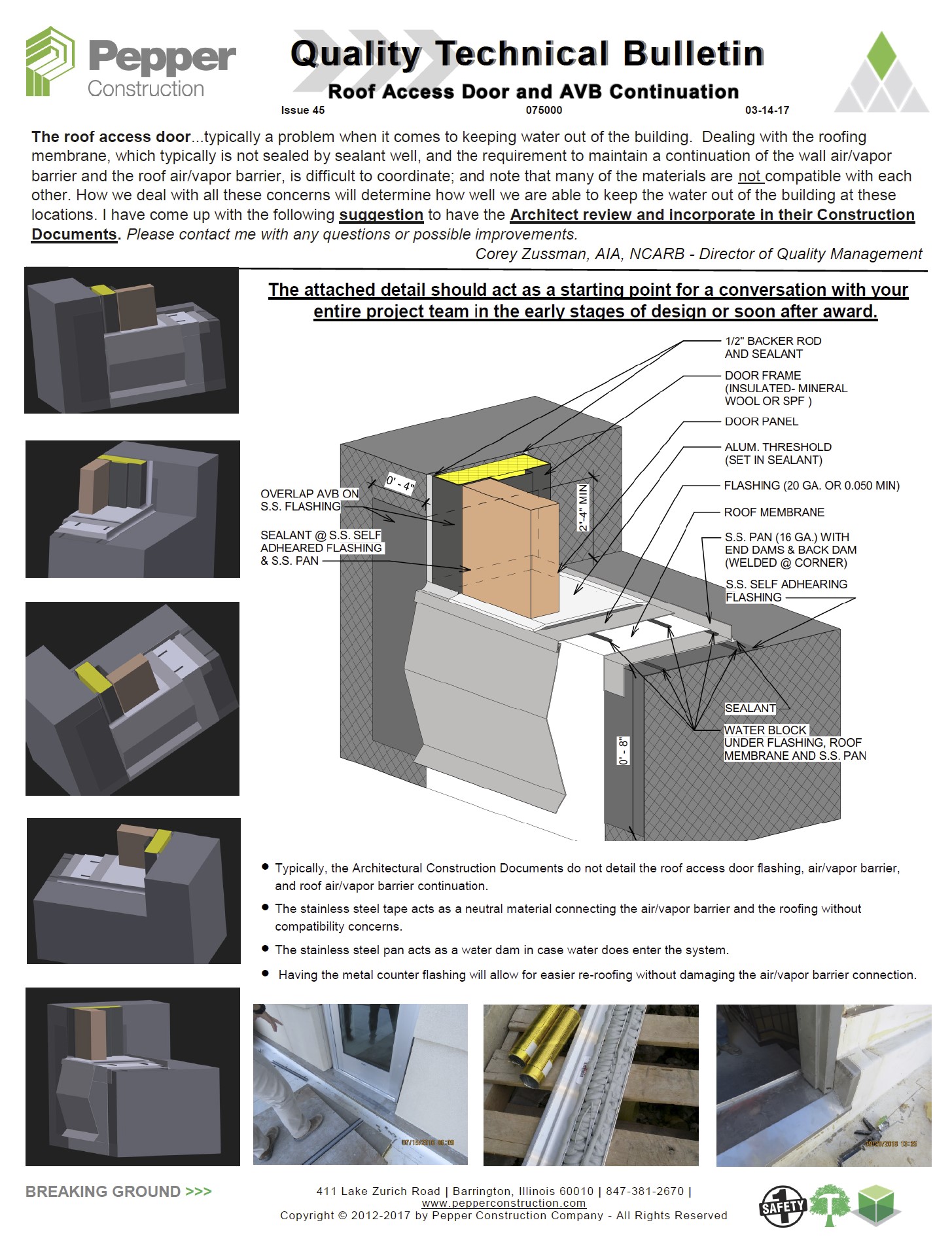
Roof Access Door and AVB Continuation - Issue 45
- Corey S Zussman, AIA
- Link
The roof access door...typically a problem when it comes to keeping water out of the building. Dealing with the roofing membrane, which typically is not sealed by sealant well, and the requirement to maintain a continuation of the wall air/vapor barrier and the roof air/vapor barrier, is difficult to coordinate; and note that many of the materials are not compatible with each other. How we deal with all these concerns will determine how well we are able to keep the water out of the building at these locations. I have come up with the following suggestion to have the Architect review and incorporate in their Construction Documents. Please contact me with any questions or possible improvements.
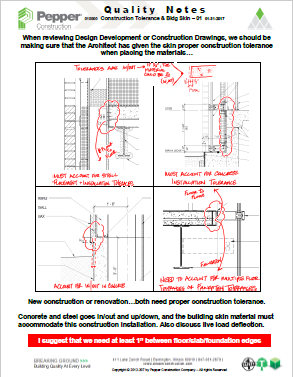
Construction Tolerance - 01 - Building Skin - QN
- Corey S Zussman, AIA
- Link
When reviewing Design Development or Construction Drawings, we should be making sure that the Architect has given the skin proper construction tolerance when placing the materials…
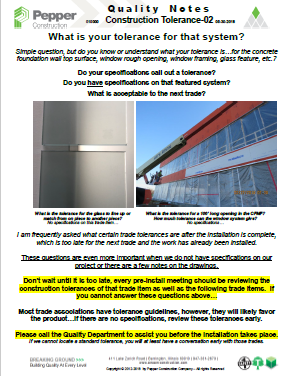
Construction Tolerance - 02 No Specs - QN
- Corey S Zussman, AIA
- Link
What is your tolerance for that system? Simple question, but do you know or understand what your tolerance is…for the concrete foundation wall top surface, window rough opening, window framing, glass feature, etc.?
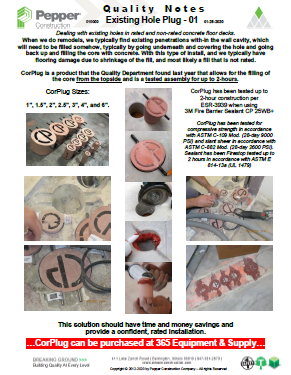
Existing Fire Rated Hole Plug 01 - QN
- Corey S Zussman, AIA
- Link
Dealing with existing holes in rated and non-rated concrete floor decks. When we do remodels, we typically find existing penetrations within the wall cavity, which will need to be filled somehow, typically by going underneath and covering the hole and going back up and filling the core with concrete. With this type of install, we typically have flooring damage due to shrinkage of the fill, and most likely a fill that is not rated.
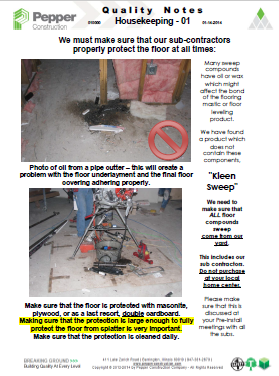
Housekeeping 01 Floors - QN
- Corey S Zussman, AIA
- Link
We must make sure that our subcontractors properly protect the floor at all times.
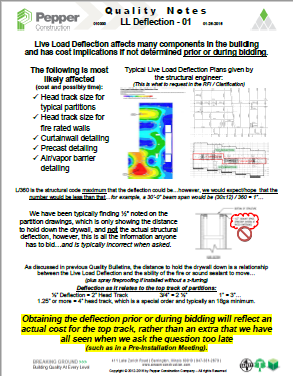
Live Load Deflection 01 Interior - QN
- Corey S Zussman, AIA
- Link
Live Load Deflection affects many components in the building and has cost implications if not determined prior or during bidding.
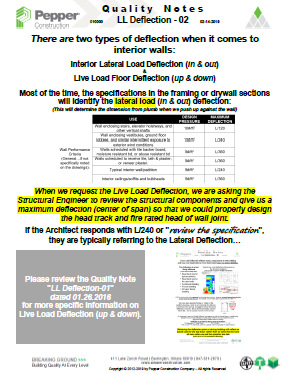
Live Load Deflection 02 Types - QN
- Corey S Zussman, AIA
- Link
There are two types of deflection when it comes to interior walls: Interior Lateral Load Deflection (in & out) and Live Load Floor Deflection (up & down). Most of the time, the specifications in the framing or drywall sections will identify the lateral load (in & out) deflection. (This will determine the dimension from plumb when we push up against the wall).
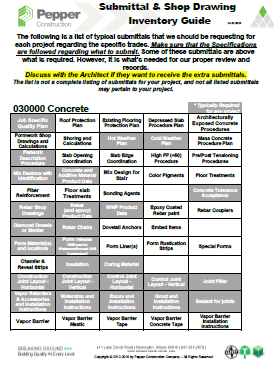
Quality Required Submittals Inventory - QN
- Corey S Zussman, AIA
- Link
The following is a list of typical submittals that we should be requesting for each project regarding the specific trades. Make sure that the Specifications are followed regarding what to submit. Some of these submittals are above what is required. However, it is what's needed for our proper review and records.
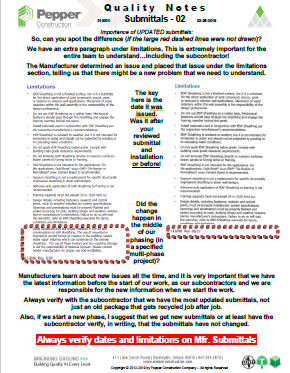
Submittals 01 - QN
- Corey S Zussman, AIA
- Link
Importance of UPDATED submittals: So, can you spot the difference (if the large red dashed lines were not drawn)? We have an extra paragraph under limitations. This is extremely important for the entire team to understand…including the subcontractor!
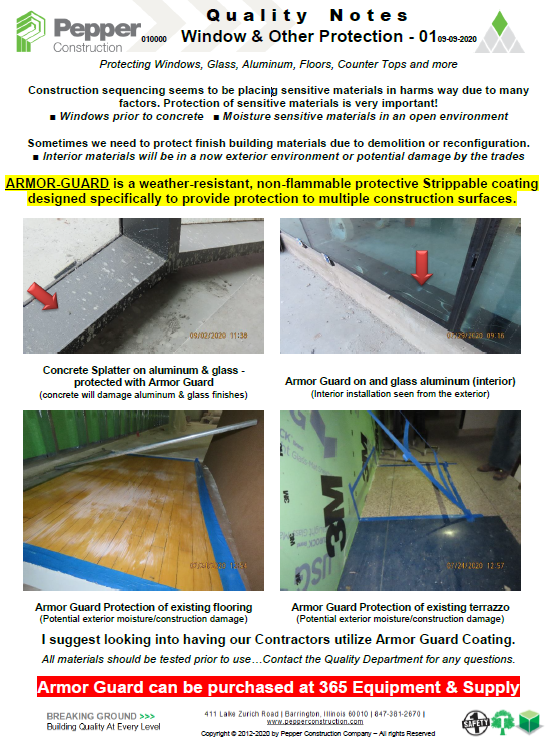
Window and Other Protection 01 - QN
- Corey S Zussman, AIA
- Link
Construction sequencing seems to be placing sensitive materials in harms way due to many factors. Protection of sensitive materials is very important! For example, windows prior to concrete, moisture sensitive materials in an open environment, sometimes we need to protect finish building materials due to demolition or reconfiguration, interior materials will be in a now exterior environment, or potential damage by the trades.
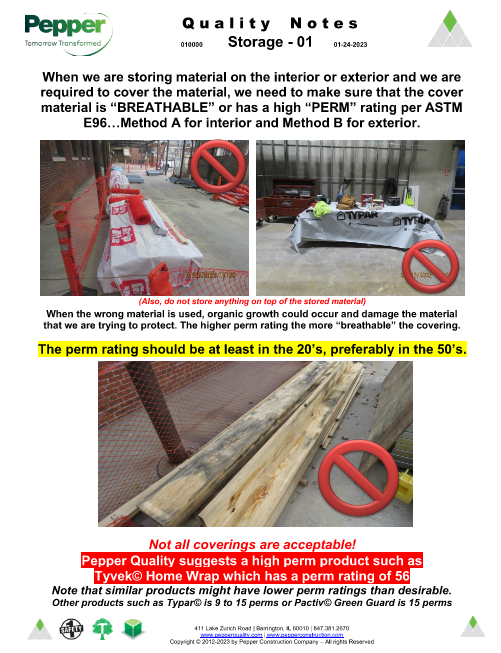
Material Storage Protection Product 01 - QN
- Corey S Zussman, AIA
- Link
When we are storing material on the interior or exterior and we are required to cover the material, we need to make sure that the cover material is “BREATHABLE” or has a high “PERM” rating per ASTM E96…Method A for interior and Method B for exterior. The perm rating should be at least in the 20’s, preferably in the 50’s. Tyvek© Home wrap is best. Please contact the Quality Department of you are not sure if the cover product is right for your project.
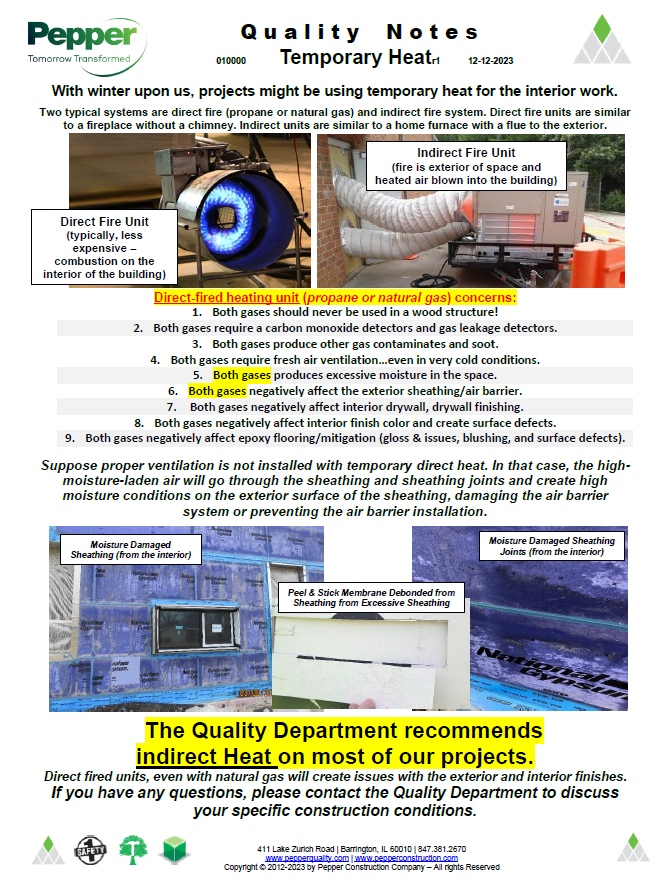
Temp Heat-r1 - QN
- Corey S Zussman, AIA
- Link
With winter upon us, projects might be using temporary heat for the interior work. Two typical systems are direct fire (propane or natural gas) and indirect fire system. Direct fire units are similar to a fireplace without a chimney. Indirect units are similar to a home furnace with a flue to the exterior. The Quality Department recommends indirect Heat on most of our projects. Direct fired units, even with natural gas will create issues with the exterior and interior finishes.
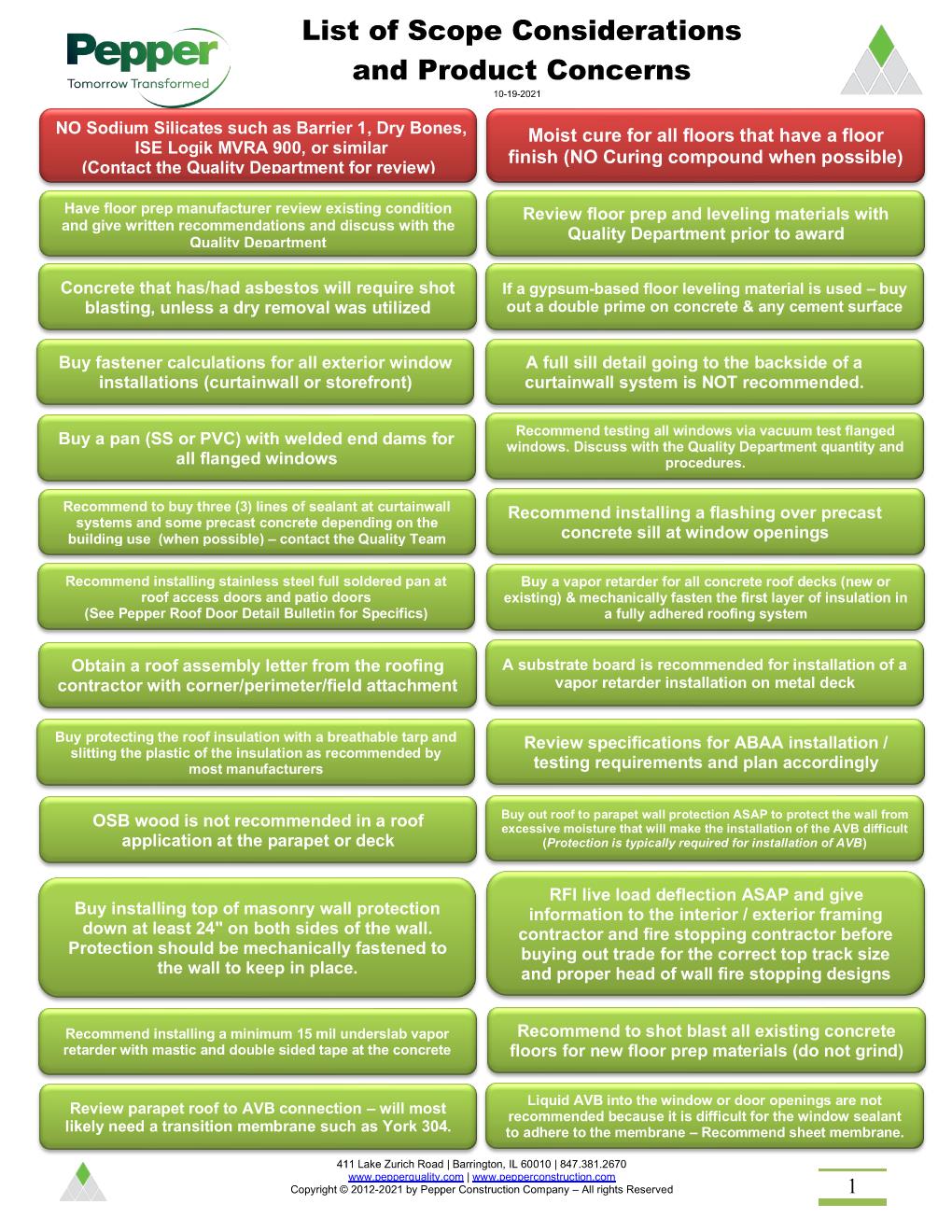
List of Scope Considerations & Product Concerns
- Corey S Zussman, AIA
- Link
A list of Scope Considerations & Product Concerns
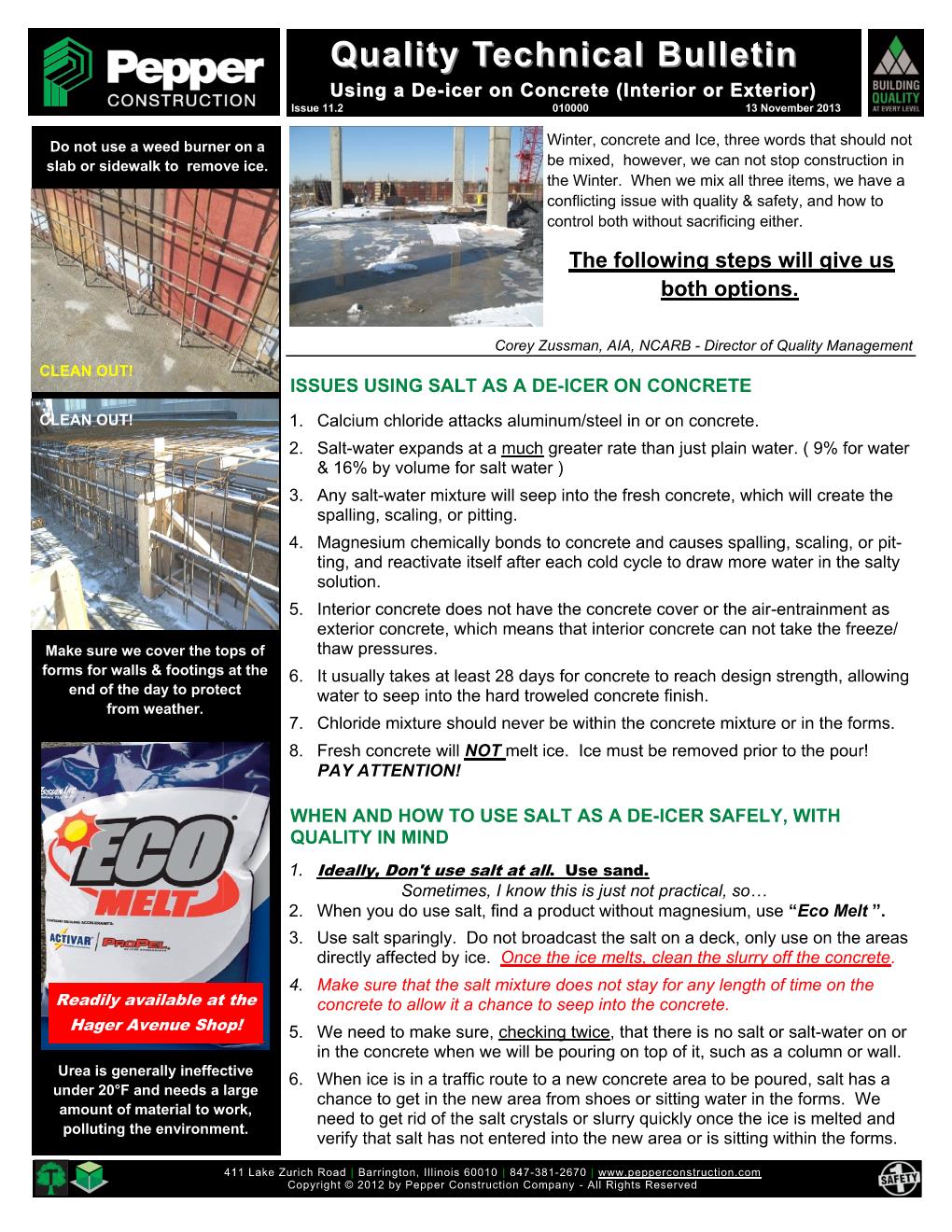
Using Di-Icers on Concrete Issue 11.2
- Corey S Zussman, AIA
- Link
Winter, concrete, and Ice are three words that should not be mixed; however, we cannot stop construction in the Winter. When we mix all three items, we have a conflicting issue with quality & safety, and how to control both without sacrificing either.
